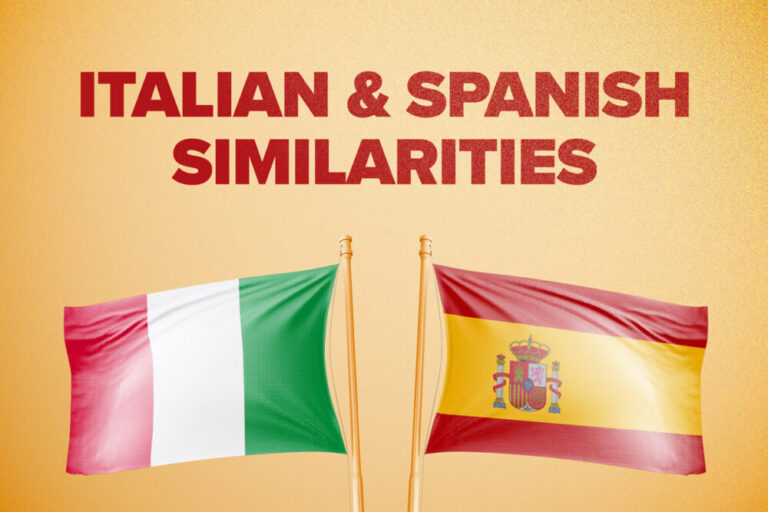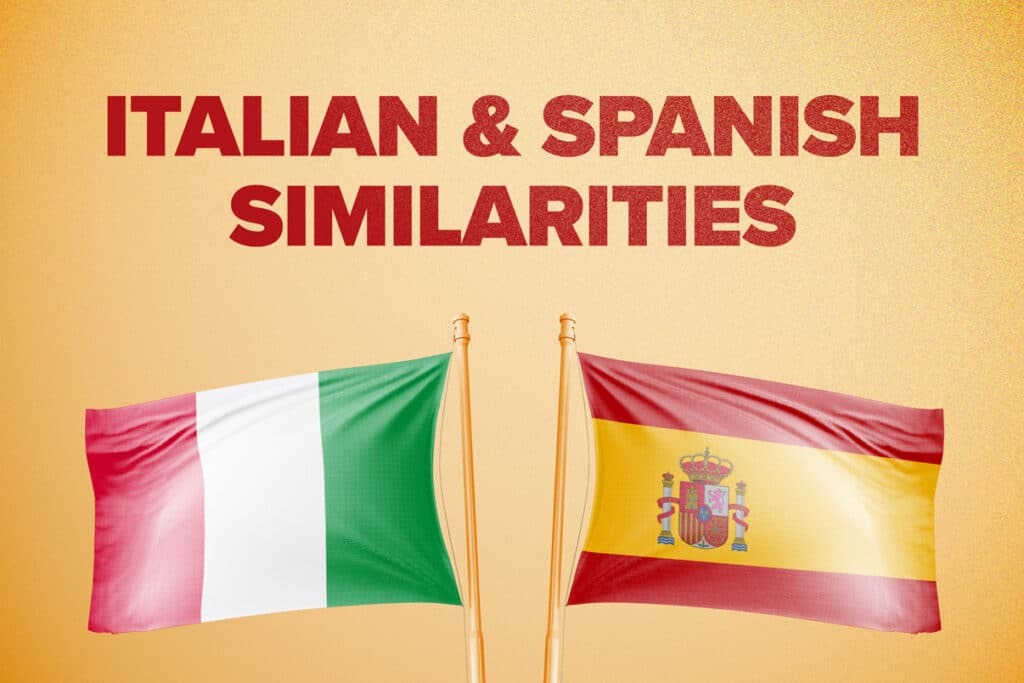
Do you speak Italian?
Are you considering learning a new language?
Then I have some exciting news: You can use your Italian skills to help you learn Spanish!
In this post, you’ll discover an array of Italian and Spanish similarities, from shared and similar vocabulary in each language to some false friends to watch out for!
Contents
Download:
This blog post is available as a convenient and portable PDF that you
can take anywhere.
Click here to get a copy. (Download)
Seeing Double: Similarities Between Spanish and Italian
There are a ton of similarities between Spanish and Italian! Here are some of the most important ones to be aware of:
- They’re both considered Romance languages, which means they’re part of a large group of languages derived from Latin. Many Romance languages are at least marginally mutually understandable.
- The lexical similarity between the two languages is about 80%. That means that the vocabulary of the two is highly comparable the majority of the time. By extension, the lexical difference between them is slight.
To put it in easy-to-grasp terms, Spanish and Italian are more similar than not—and that’s excellent news for anyone who wants to speak both languages.
- The sentence structure is also the same: They follow the subject-verb-object construction that anyone familiar with either language will recognize.
- Vocabulary, as we mentioned, is also incredibly similar. If you know one of the languages, you’ve got a big head start on learning the other. Some Spanish and Italian words and phrases sound alike and mean similar things, while others mean exactly the same thing.
You might think this is confusing, but look at it this way: Knowing these words in one language means you know them in the other, too. And that translates to a sizable chunk of shared vocabulary! Learn it once and you’ll be set for both languages.
- The vowel sounds of Spanish and Italian are the same, too. So if you’ve got your Italian pronunciation down, you’ll be able to apply that knowledge to Spanish words and phrases.
Similar Spanish and Italian Words to Get You Started
Shared Vocabulary
Below is a sampling of the words the two languages have in common. You’ll see even in this small list that vocabulary sharing is beneficial to language learners!
Notice that in some instances, the only difference between the words is an accent mark.
Vocabulary with Some Minor Spelling Variations
These words are basically the same. In fact, if you hear them spoken out loud, in many cases you wouldn’t even hear the difference.
All the words in this section and the previous one are called cognates, which are words that sound similar and mean the same thing. To learn even more Spanish-Italian cognates, check out Quizlet’s fun cognate flip cards!
You can also listen to natives using these words with authentic Spanish and Italian videos on the FluentU program.
Italian Words of Spanish Origin
Spanish and Italian don’t just share similar-sounding words: In some cases, they even borrow words from one another.
Here are a couple of interesting Italian words that come from the Spanish language. They’re useful conversational tidbits—especially if you ever find yourself talking with another language lover.
They’re also handy if you somehow find yourself craving a cigar in the middle of a hurricane.
EZ Glot has a list of more Italian words that came from the Spanish language.
Spanish Words of Italian Origin
Spanish has also borrowed a few words from Italian vocabulary.
Like the Italian words taken from Spanish, these sound the same and mean the same in both languages but have slight spelling variations.
These examples are artistic and lovely, and sure to be useful if you’re ever in Barcelona when the opera is performing!
Check out even more examples over at EZ Glot.
Similar Spanish and Italian Phrases
While these two languages share a lot of basic vocabulary, their similarities don’t end there. They have many phrases—most of them common and highly practical!—that can make conversations in either language much less stressful. Expressions also add color to conversations, so make a note of these.
Let’s face it: The expressions are so similar that if you’re in a Spanish-speaking country and slip in an Italian phrase or two, you’ll still be understood.
*Note: Both salud and salute are also things you say when you clink glasses (like the English “cheers!”). In addition, you say ¡Salud!
in Spanish and Salute!
in Italian when someone sneezes. What a wide variety of uses for such a simple word!
A Word to the Wise: Beware of False Friends
Sometimes, the similarities between languages can actually trip you up. You might’ve heard a story about a guy trying to say he’s embarrassed in Spanish and ending up announcing that he’s pregnant (embarazado), instead!
So be sure to watch out for “false friends,” or words that look similar in Spanish and Italian but actually have different meanings or uses. For example:
I’d be remiss if I didn’t point out one extra-special shared vocabulary word. This one might cause some confusion and would certainly lead to lots of laughter so I’ll clue you in before you get things mixed up.
This is a case where the spelling is identical but the meanings are very different!
If we had time, I’d share a story about the time I met a potential mother-in-law and inadvertently requested a donkey to put on my Italian bread. No, I’m not kidding, it actually happened.
And that’s why I took the time to point this word out to you! Don’t make my mistake!
If you already speak Italian and are considering learning Spanish, keep all the commonalities of these two romance languages in mind. You already have so much Spanish knowledge (and probably didn’t even realize it) that adding to it with a Spanish language program will be an exciting experience.
Italian and Spanish share so much. Not only are they Romance (and romantic) languages, but their gorgeous native lands make this pairing a match made in heaven for language learners who love a challenge.
So why choose just one?
Learn both and maximize your foreign-language experience. Knowing multiple languages increases your chances of communication as a global citizen and that’s a very good thing, indeed!
Good luck! Or as they say in Italian, Buona fortuna!
(Good luck!) and in Spanish, ¡Buena suerte!
(Good luck!)
Download:
This blog post is available as a convenient and portable PDF that you
can take anywhere.
Click here to get a copy. (Download)
And One More Thing…
If you’ve made it this far that means you probably enjoy learning Spanish with engaging material and will then love FluentU.
Other sites use scripted content. FluentU uses a natural approach that helps you ease into the Spanish language and culture over time. You’ll learn Spanish as it’s actually spoken by real people.
FluentU has a wide variety of videos, as you can see here:
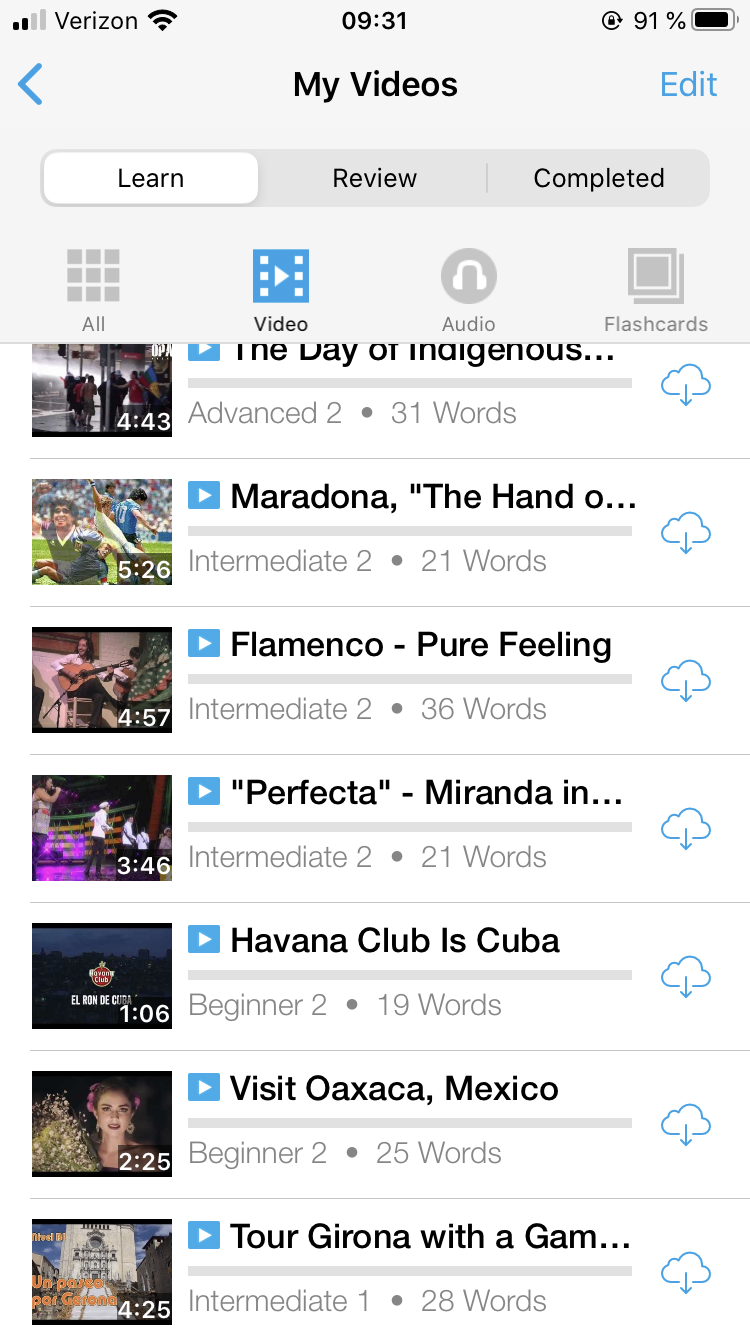
FluentU brings native videos within reach with interactive transcripts. You can tap on any word to look it up instantly. Every definition has examples that have been written to help you understand how the word is used. If you see an interesting word you don’t know, you can add it to a vocab list.
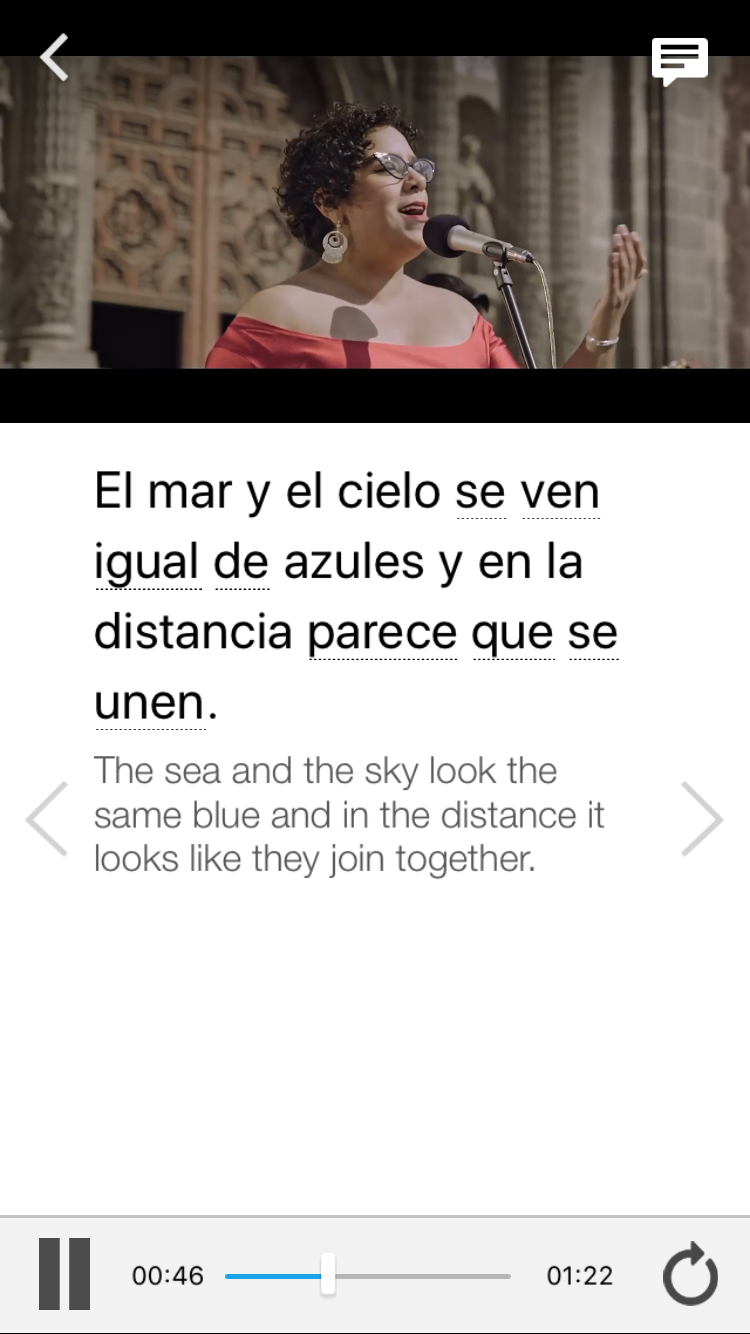
Review a complete interactive transcript under the Dialogue tab, and find words and phrases listed under Vocab.
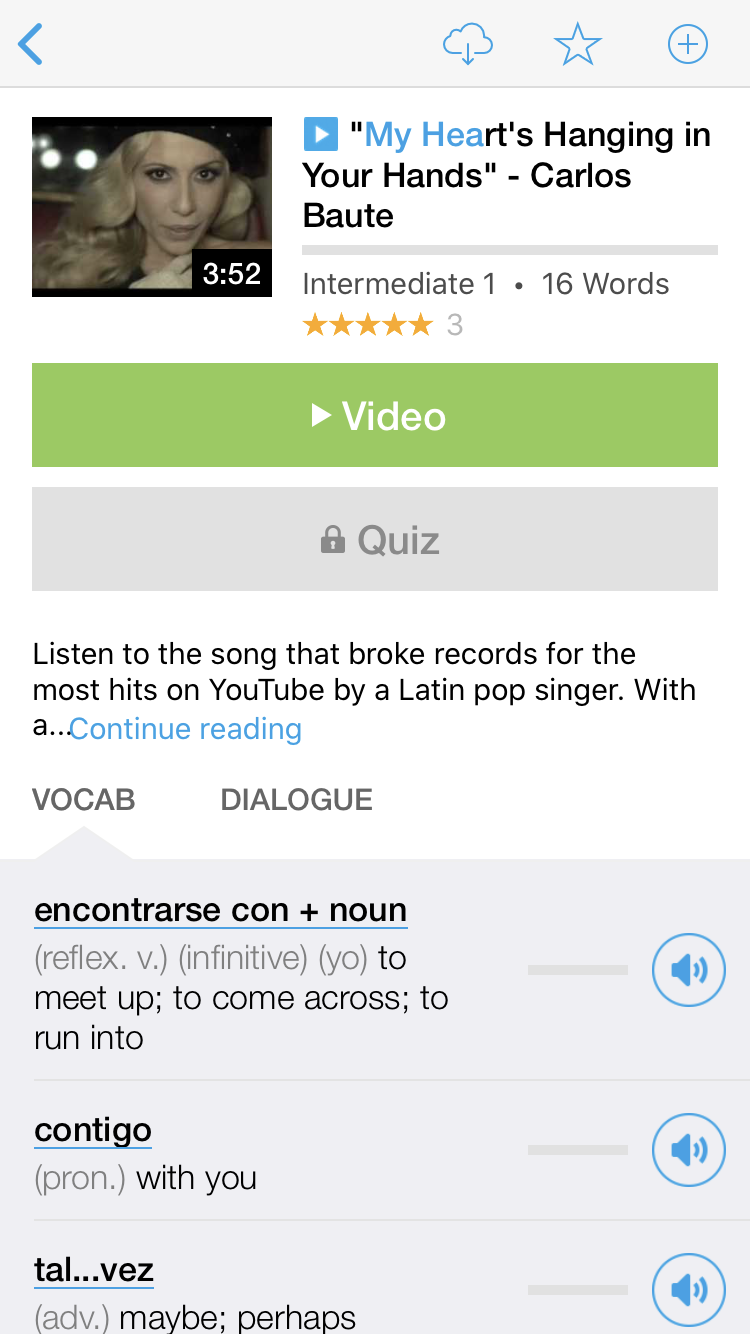
Learn all the vocabulary in any video with FluentU’s robust learning engine. Swipe left or right to see more examples of the word you’re on.
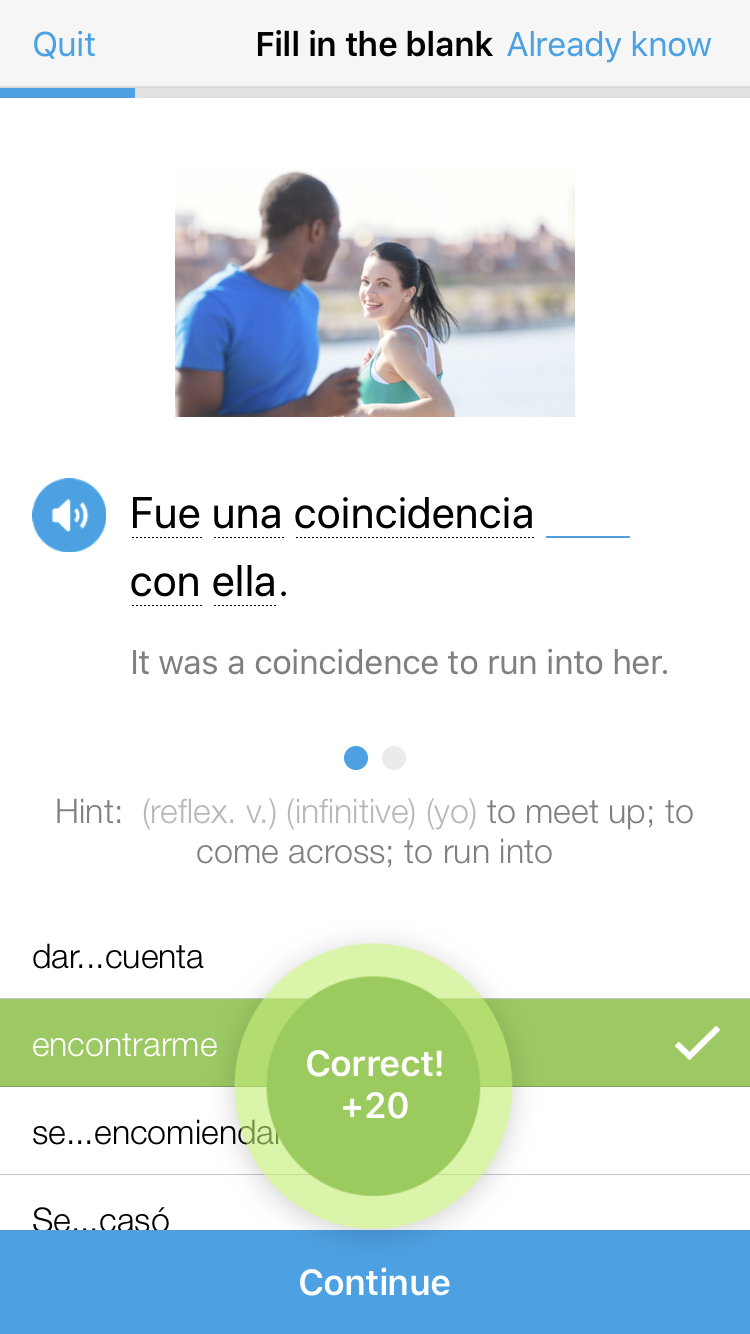
The best part is that FluentU keeps track of the vocabulary that you’re learning, and gives you extra practice with difficult words. It’ll even remind you when it’s time to review what you’ve learned. Every learner has a truly personalized experience, even if they’re learning with the same video.
Start using FluentU on the website with your computer or tablet or, better yet, download the FluentU app.


